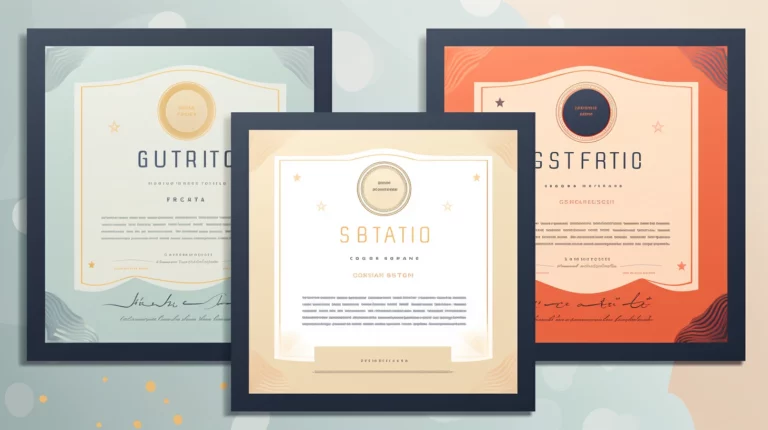The style of a certificate should be reflective of its purpose, the entity issuing it, and the individual or group receiving it. As a designer, you have an array of styles at your disposal, each offering unique opportunities for creativity. Here are some ideas for different certificate styles:
1. Formal Style: Formal certificates, usually issued by educational institutions or professional organizations, typically have a restrained and elegant design. You might consider a simple color scheme with one or two colors, a classic font, and perhaps a subtle watermark or border. Adding the institution’s crest or logo can lend an extra touch of authority.
2. Modern Style: For a sleek, contemporary feel, go for a modern style. This could feature bold color contrasts, clean lines, and sans-serif fonts. Shapes and icons can be used sparingly for added visual interest. The overall look should be streamlined and professional.
3. Vintage Style: Drawing inspiration from the past can result in a truly eye-catching certificate. You could use sepia-toned colors, classic typography, and elements such as ornate frames or scrolls. Textures can also be incorporated to give a weathered or antique look.
4. Playful Style: If the certificate is for a less formal occasion or for children, a playful style can be used. Bright colors, fun patterns, cartoon-like fonts, and even illustrations can make the certificate engaging and friendly.
5. Nature-Inspired Style: This style can work well for certificates related to environmental causes, outdoor activities, or simply to evoke a calming, natural feel. Green color palettes, leaf motifs, and natural textures can be combined to create an earthy design.
6. Futuristic Style: For tech-related certificates or just to create a cutting-edge look, a futuristic style can be used. Neon colors, digital or 3D-like fonts, and abstract shapes can give the certificate a forward-thinking, innovative feel.
7. Minimalist Style: If simplicity is the key, a minimalist style is a way to go. This could involve plenty of white space, a limited color palette, and a simple, readable font. The key is to make every element purposeful and impactful.
8. Artistic Style: If the certificate is for a creative achievement or you simply want to make a bold statement, an artistic style can be employed. This could involve hand-drawn elements, unconventional layouts, vibrant colors, or unique typography.
These ideas are just the tip of the iceberg when it comes to certificate styles. Remember, each certificate is an opportunity to create something meaningful and memorable. By choosing the right style and infusing it with creativity, you can create a certificate that truly celebrates the recipient’s achievement.

